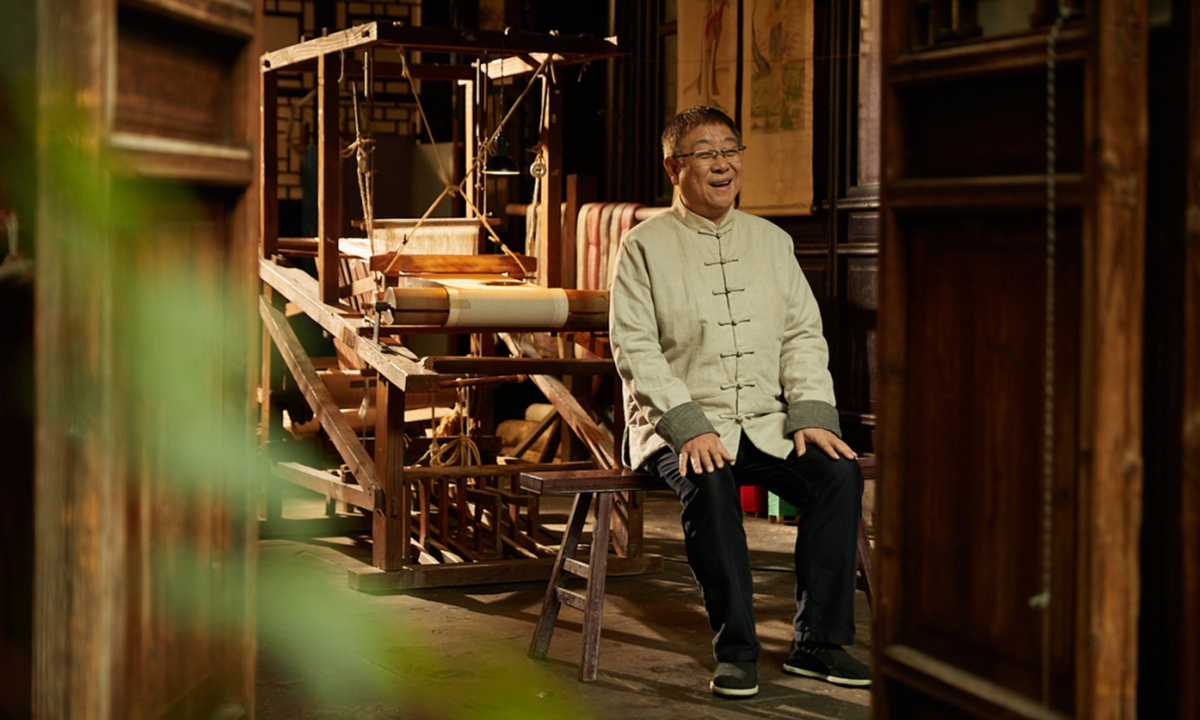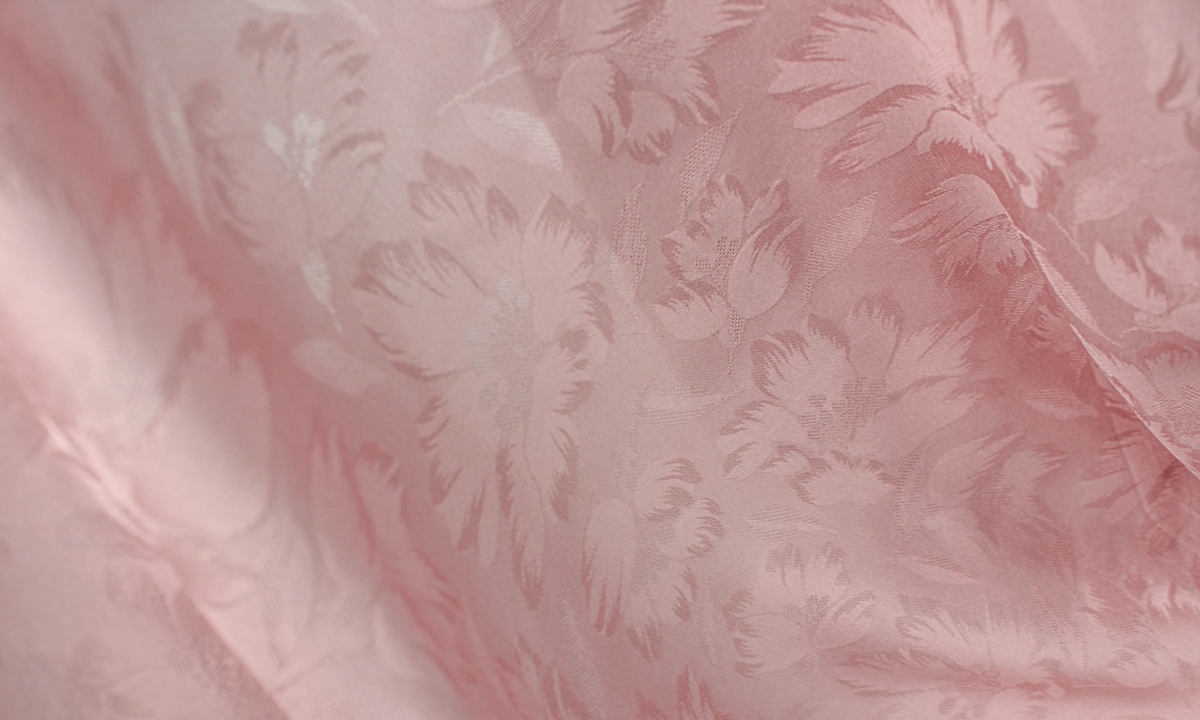ARTS / ART
E-commerce boosts sales of China’s intangible cultural heritage products

Silk craftsman Zhu Liqun sits in front of a silk reeling machine. Photo: Courtesy of Zhu Liqun

Luo(gauze), a Chinese traditona silk weaving method listed as Chinese Intangible Cultural Heritage. Photo: Courtesy of Zhu Liqun
Surrounded by silk reeling machines and listening to the rumbling noises reverberating inside the factory where hundreds of silk products are being readied for market is part of silk expert Zhu Liqun's daily work life.
Having lived and worked for decades in Suzhou. Jiangsu Province, one of the most famous and largest silk production hubs in the world, Zhu has been getting an increasing sense of crisis as he has watched sales decline over the past few years. However, the rise of e-commerce has been a boon for his business, as has recently increased interest in China's intangible cultural heritage.
Ancient techniques
Over 500 years ago, when Ming Dynasty (1368-1644) prince Zhu Shugui's favorite concubine died, he decided to give her a burial of a higher rank than her social class demanded. Hundreds of years later, when archaeologists excavated the burial site, they discovered an extremely luxurious silk shoulder dress believed to have belonged to her. The weaving techniques used to make the dress so sophisticated that archaeologists said it "set a new ceiling for modern society's understanding of silk."
In 2014 the Chinese Academy of Social Sciences contacted Zhu and invited him to join a project dedicated to restoring the clothes. Zhu spent three years decoding the patterns of the silk before they were finally able to create a replica of the dress, thereby writing a new chapter for silk research in China.
"This is completely different from all the ancient weaving styles recorded in books. We restored it bit by bit based on measurement data attained by putting this cultural relic under the microscope," Zhu told the Global Times.
Zhu's career as a silk craftsman started over 40 years ago. His expertise is weaving luo (gauze) clothing.
In China, silk textiles are categorized based on different weaving methods that result in products that vary in thickness. Among weaving techniques such as ling (twill damask), chou (common silk), and duan (satin), luo was one of the most popular techniques in ancient times.
"Many people talk about these silk textiles all the time, but very few can differentiate them just by looking," worried Zhu.
"But basically speaking, ling and luo refer to thinner silk, while chou and duan are thicker materials suitable for clothing such as autumn or winter cheongsam dresses. Luo refers to material woven with stranded warps that is often used for summer dresses that are lightweight and breathable," Zhu noted.
Exploring e-commerce
According to the 2021 Intangible Cultural Heritage E-commerce Development report, a total of 14 intangible cultural heritage products earned more than 100 million yuan ($147,900) on Chinese online platforms from September 2020 to August 2021, demonstrating how the traditional Chinese culture has captured the attention of the public.
Among these products are items made with reeds.
"I made stools out of reeds. And I can make two of them a day. They each sell for more than 100 yuan [$14] online and I make about 80 yuan per sale," said 66-year-old Liu Zimei.
Born and raised in Wantou village, East China's Shandong Province, Liu, like most villagers, makes a living off of weaving wicker products. The village is near the largest natural freshwater lake on in northern Shandong Province, so massive amounts of reeds can be collected from the lake in early winter.
The village has been making wicker products for more than eight centuries. For a long time, its business was good with products even being exported overseas. But since the 1990s, worldwide financial crises led to rising production costs and a decline in exports, leaving the village in a severe predicament.
Zhu and his silk factory experienced a similar situation. Originally relying on exports to Japan, declining demand led to lower sales. Unsure what to do, Zhu decided to join the internet to introduce his products to the wider world.
On Douyin, the nearly 60-year-old man goes by the handle "Uncle Zhu and his luo products." He patiently introduces how the clothing is made and holds activities to promote these ancient weaving techniques. So far, his efforts have paid off as he has acquired nearly 100,000 fans over the past six months.
"The unique technique allows luo material to have very small holes. It used to be one of the high-end fabrics favored by ancient emperors and nobles. As to color, the flamboyant people of the Tang Dynasty [618-907] liked bright colors for their fabrics, while the elegant people of the Song Dynasty [960-1279] favored dark monochromatic stripes," Zhu explains in one livestream.
With the help of e-commerce, the total turnover of products made by intangible cultural inheritors in 2021 increased by 15 times year on year, and this increase is expected to continue.


